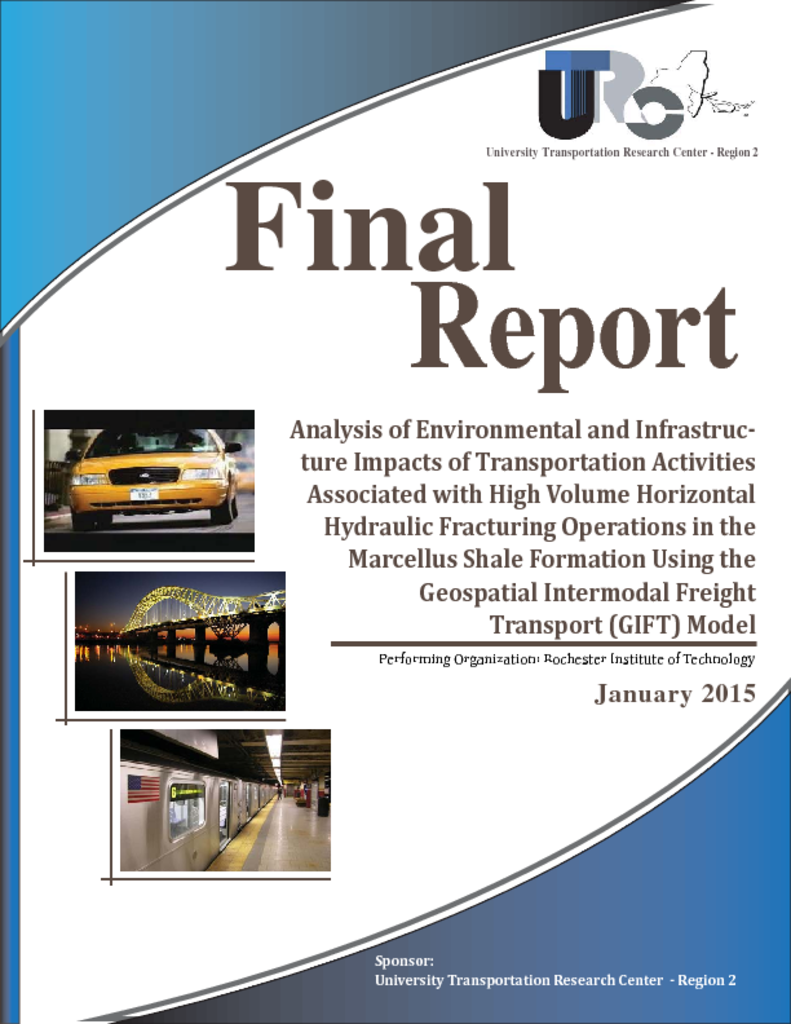The natural gas extraction method, High-Volume Horizontal Hydraulic Fracturing (HVHF), has a significant transportation component that impacts transport infrastructure and rural communities in both positive and negative ways. Estimates provided by the US Energy Information Administration put natural gas reserves of the entire Marcellus Shale formation, our area of interest, at 410.3 trillion cubic feet. The New York State Department of Environmental Conservation estimates each Marcellus Shale well will require 625-1148 one-way truck trips for equipment, materials, and waste movement. There are currently upwards of 20,000 wells or approved permits in the study area. While economically benefiting rural areas, where the majority of the wells would be located, there are environmental and social tradeoffs to developing these resources, many of which are associated with transportation activities.


